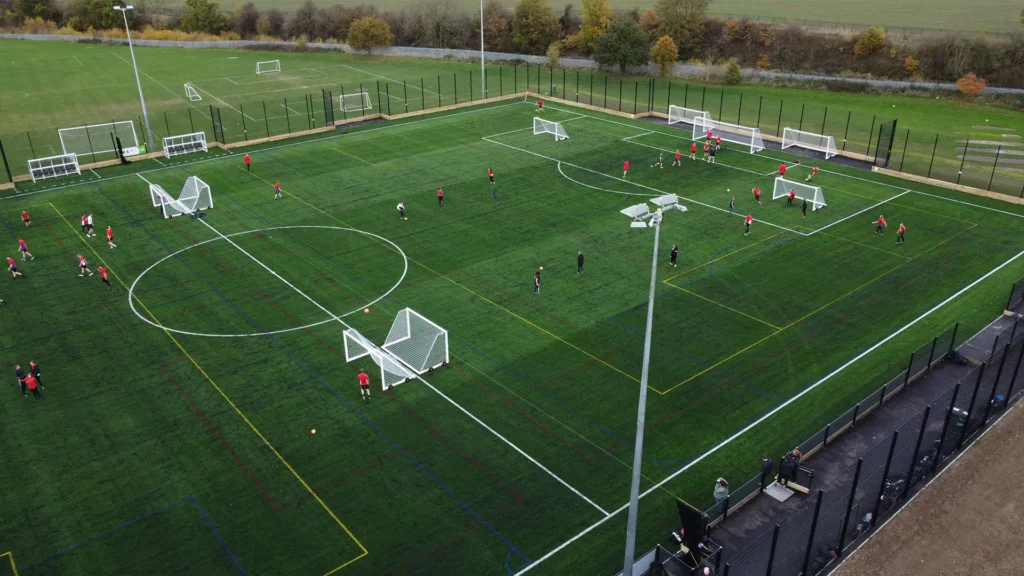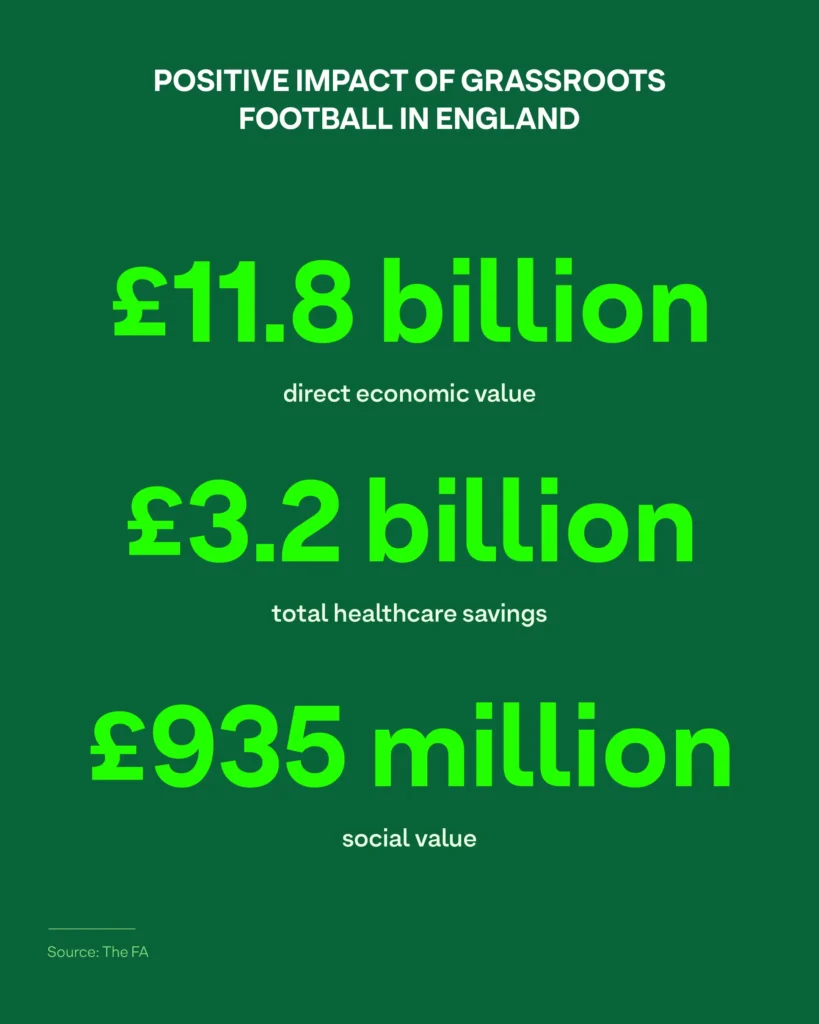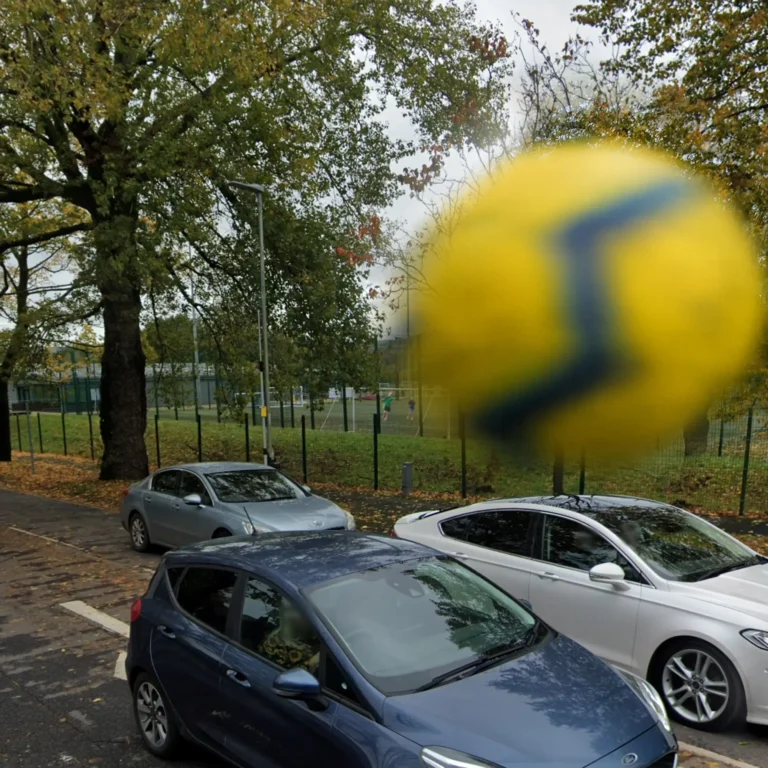Football’s popularity in England is undeniable. Recent figures from The FA show 5.1 million children and 10.6 million adults play football, roughly 15.7 million people in total. That works out to almost one in four people nationwide enjoying football regularly. In fact, 28% of people surveyed said they had played football in the past month, making it by far the country’s most popular sport. For context, no other team sport comes close to those numbers. In other words, football is in our culture and ‘in the blood’ of the nation.
Yet despite this massive interest, planning decisions often ignore the obvious demand for football. Too many decision makers are ‘pretending’ that providing a multi-sport concrete court will meet community needs, while the supply of proper football facilities (especially all-weather astro turf pitches) is still nowhere near enough. We will show below that the data clearly favours more football pitches, not generic concrete multi-use courts and that non-profit organisations like Football for All are exactly what local plans should include to channel this passion.
Why multi-sport concrete courts miss the mark
Local authorities love the idea of multi-use games areas (MUGAs), concrete or tarmac courts lined out for basketball, hockey, netball, five-a-side, etc. These look good on paper but in practice they often fail to match what people actually want. Considering the data, 96% of local councils in England report they do not have enough artificial 3G/4G football pitches to meet demand. The Football Foundation estimates 2,000 more astro pitches are needed nationwide to satisfy grassroots football alone.
Building yet another multi-sport court in these areas just pushes this problem under the rug. A fenced concrete court doesn’t protect the body or provide the weather-proof play conditions that footballers need. By contrast, a well-maintained astro pitch can be used 70–80 hours per week, often day and night, in all weathers. Compared to only 4–6 hours/week on a concrete or tarmac court that’s slippery when wet and roasting in summer. In spite of this, recent funding schemes mandate that 40% of new projects have a multi-sport offer. In other words, nearly half of government-funded facilities are required to support games ‘other than football’.
That sounds inclusive but on the ground it means many budgets are spread thin across sports with far smaller followings. There’s 15.7 million footballers in England, only a few hundred thousand people play sports like netball (∼319,000) or cricket (∼229,000) regularly. It’s no surprise that local clubs repeatedly hear: ‘Why build yet another basketball court when there’s a queue for every football game?’ In fact, forcing ‘multi-sport zones’ in areas hungry for football can end up with empty nets and frustrated players.
In short, the demand is overwhelmingly for football. Shifting focus to concrete MUGAs might make administrators feel like they’re covering all bases but the data shows it is a mismatch. Nearly every piece of evidence on community sport in England underscores that football needs its own investment, not just a shared court.

Too many players, not enough pitches
To put it in perspective, Germany already has about twice as many 3G pitches and far fewer players per pitch. The numbers make it clear, England needs more quality football pitches. Grass fields often flood out and lie unplayable so artificial 3G/4G surface is the solution. Yet only 4% of councils have enough astro pitches for their grassroots players. The Football Foundation reports that more than half of county FAs lack any 3G pitch at all. As a result, every new artificial grass football pitch is immediately overbooked.
This causes a lot of frustration in local football. People argue about pitch access, booking fees, who gets to play and when. Some say the game’s dominated by certain groups or shut off from others. But the truth is, none of this would be a problem if there were enough pitches to go round. The shortage is real. More 3G pitches would mean fewer arguments, fairer access and a game that truly feels open to everyone.
This shortfall has real consequences. Thousands of grassroots matches are postponed or cancelled each year due to waterlogged grass (estimated 100,000 games lost last season). Young children and adults alike miss out on play time. Meanwhile, it is maddening to see brand-new multi-sport courts lying empty on wet days while local kids kick footballs up against a concrete wall or wander off the field. Removing ‘No Ball Games’ signs is a good step, but without real pitches nearby, not much changes.
A recent survey published by the Department for Culture, Media and Sport explicitly found that poor quality pitches are the biggest barrier to growing participation. We should be using our £ (government funds, developer levies, etc.) to build or upgrade full-size or small-sided 3G pitches, not another rubber tennis court that only two to four people can use occasionally.
‘Football is England’s national sport. It runs in our veins’
Why is demand so high? Because football is the national pastime. Kids grow up dreaming of playing in the Premier League stadiums. Unlike many sports, football has very low barriers. The rules are simple, the game is exciting and it appeals across class, gender and age. Among all sports, football is the top choice for participants (roughly 40% of all sports players choose football).
Contrast this with attempts to push other sports equally. The government’s plan to make 40% of new facilities multi-sport assumes many people want non-football options in those areas. But if, say, only 10% of residents care about rugby or basketball, then those facilities will be underused. We should align resources to what people actually do. And in England, by a large margin, people play football.

Break barriers and make Football inclusive for all
Of course, not everyone feels included by football right away. Some adults remember negative experiences such as too competitive school teams, exclusion from youth clubs or just never having the proper chance to try it. ‘It’s not for me,’ some might say. But as many volunteers and charities have found, when football is presented as fun, friendly and open, those people can be hooked as much as anyone.
We must remember that our enthusiasm for football isn’t evenly distributed. Girls and women, some ethnic minorities, disabled people and those in deprived areas have historically had fewer opportunities. National surveys do show big gains in female participation recently and yet many still cite lack of local options or confidence as barriers. This means that while 28% of the total population played football last month, for some subgroups the rate is much lower. But the appetite is there. A grassroots study found that women and girls often see the biggest self-esteem boost from starting football, once they try it.
Football’s power to unite is why we say everyone deserves a chance at it. For someone who never played in youth, a 60‑minute casual game can feel like a revelation. With even a small nudge, someone inviting you to play or a community game nearby the adults who once said “I hated football in school” often discover how much they enjoy it as an adult. We hear it all the time. Young adults and busy professionals alike call their weekly game ‘my mental escape’ or credit football with keeping them fit.
Football for All in action
At Football for All, our mission is to harness this passion. Since 2014 we’ve been expanding accessible football games across England. Today, we’re proud to say over 2,500 games every month are going ahead across 51 local areas. We’re one of the largest community football organisers in the UK and 61% of our sessions take place in communities that need extra sports and social opportunities.
What makes our sessions work for so many people? We follow a simple, flexible model. Games are:
- 60 minutes long – a fun, quick game, not a 90-minute commitment
- Small-sided – easier for beginners to get involved and keep the ball in play
- Friendly and casual – no pressure, no refs, just local residents enjoying their time together
- All abilities welcome – from total beginners to ex-players, everyone’s welcome
- Co-ed and women-only options – always inclusive and comfortable for female players
- No club commitment – turn up and play, no season-long commitment needed
- Adults 18+ – filling the gap for working-age people who left school ages ago
- Reinvested locally – every penny players pay goes back into growing the game
- Access to play football in 51 local authorities (and growing)
By keeping the ethos fun and open, we reach people who might never join a gym or county team. The word of mouth is so powerful. Once a few people start playing, more come. Each game is like a community event. Volunteers (we call them Game Hosts) get trained to welcome newcomers, ensure basic safety and split teams.
The results speak volumes. Many first-time players write back to say the sense of belonging on the football pitch is invaluable. This is exactly the boost local planners want in their neighborhoods, yet it’s delivered with no budget by leveraging existing facilities and goodwill.
Importantly, Football for All is proven to scale up demand for pitches. Every new player created is effectively a better justification for a new astro pitch. For example, we recently expanded into 10 additional towns. Each town now shows 50–100 more regular players than before, which strengthens the case for better pitches
Why local plans should prioritise Football
Putting it all together, a significant share of the population wants to play football and every game has positive ripple effects. When councils build the right kind of facility, say, a full-size or 5‑a‑side 3G pitch, they unlock health, social and economic benefits. Grassroots football has enormous social value and economic impact. Plus, every properly used pitch reduces future NHS bills by preventing inactivity-related diseases.

So local sports plans should double down on football. That means encouraging more astro pitches in leisure centre plans, getting Football for All or similar groups involved in programming and avoiding one-size-fits-all ‘sport blocks’ with low utilisation. In practice, it could be as simple as, if a developer offers ‘a public sports area,’ insist it be an artificial turf pitch. Or if funding is available to build a MUGA, allocate part of it to football.
It’s true that diversifying sports options has merit but not at the cost of neglecting the biggest one. The government’s multi-sport mandate only makes sense if there is matched demand. We’ve seen money spent on little used courts suggested in plans, yet 96% admit they lack enough football surfaces.. We should flip that formula. Invest 60–70% in football and let the remaining funds adapt for other sports in multi-use fashion.
Including Football for All in local strategies is a no-brainer. We already plug gaps at minimal cost. In many areas we partner with schools and sport centres to host sessions at old pitches that would otherwise sit idle. Our model means councils don’t need to pay salaries, they just provide the space. In return they get healthier, happier residents. This aligns perfectly with national goals.
Finally, we note that anything less than football-specific planning is literally writing off opportunities. The facts are compelling. Over 15 million English people want to play football. It’s one of the rare areas where our hearts and our feet agree. Every local plan should reflect this passion. Let’s stop pretending. The beautiful game isn’t a side activity and a hard court isn’t a pitch.
The numbers prove it. Sport England’s own data shows that football is the number one sport across all ages, income levels and ethnic groups. It has 3 times more participants than the next most popular team sport. If decision-makers want real use, they should follow the demand. Supporting Football for All in changing the lifestyle of an entire area is one of the most direct ways to meet that need.
Sources: Official data from Sport England and The FA (participation rates, economic impacts) and the Football Foundation (pitch shortfalls) back up these claims. The statistics above are drawn from recent surveys and reports to ensure our arguments match the latest evidence.


